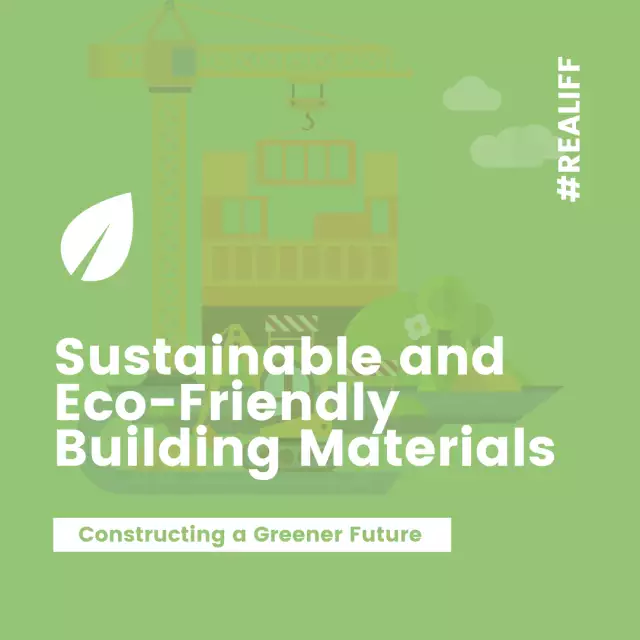Sustainable Architecture: Building a Greener Future
Sustainable architecture, also known as green architecture, is a design approach that prioritizes the use of environmentally-friendly and resource-efficient materials and technologiesin construction. Sustainable architecture aims to reduce the impact of buildings on the environment while enhancing the comfort and health of the occupants. In this blog post, we will explore the principles of sustainable architecture, its benefits, and some examples of sustainable buildings.
Principles of Sustainable Architecture
Sustainable architecture is based on several key principles:
- Energy Efficiency:A sustainable building should consume minimal energy and generate its own energy using renewable sources. The design should maximize the use of natural light, optimize heating and cooling systems, and use energy-efficientappliances.
- Water Efficiency:A sustainable building should use water efficiently by harvesting rainwater, recycling wastewater, and using water-efficient fixtures and appliances.
- Materials and Resources:Sustainable architecture prioritizes the use of locally-sourced, non-toxic, and renewable materials. It also emphasizes reducing waste during construction and demolition and recycling materials when possible.
- Indoor Environmental Quality:A sustainable building should provide a healthy and comfortable indoor environment by optimizing air quality, thermal comfort, and acoustics.
Benefits of Sustainable Architecture
There are many benefits to sustainable architecture, including:
- Energy Savings:Sustainable buildings use less energy and generate their own energy, leading to significant cost savings on utility bills.
- Reduced Environmental Impact:Sustainable buildings have a smaller carbon footprint and reduce the impact of buildings on the environment by using environmentally-friendly materials and technologies.
- Improved Health and Comfort:Sustainable buildings provide a healthier and more comfortable indoor environment, which can improve the productivity and well-being of the occupants.
- Increased Property Value:Sustainable buildings are in high demand and can command higher property valuesdue to their energy efficiency, environmental sustainability, and improved indoor environmental quality.
Examples of Sustainable Buildings
There are many examples of sustainable buildings around the world. Here are some notable examples:
- One Angel Square, Manchester, UK:This office building is one of the most sustainable buildings in the world, using rainwater harvesting, solar panels, and a biomass boiler to generate its own energy.
- The Edge, Amsterdam, Netherlands:This office building uses a smart lighting system, solar panels, and a rainwater collection system to generate its own energy and reduce its environmental impact.
- Bullitt Center, Seattle, USA:This office building is designed to be carbon-neutral, generating all of its own energy using solar panels and a geothermal heating and cooling system.
- The Crystal, London, UK:This sustainable building is powered entirely by renewable energy sources and uses rainwater harvesting and greywater recycling systems to reduce its water consumption.
FAQs
Q: What is sustainable architecture? A: Sustainable architecture is an approach to building design and construction that prioritizes environmental sustainability, energy efficiency, and the health and comfort of occupants. Sustainable buildings aim to reduce their impact on the environment and generate their own energy using renewable sources such as solar, wind, and geothermal.
Q: Why is sustainable architecture important? A: Sustainable architecture is important because buildings consume a significant amount of energy and contribute to climate change and global warming. By adopting sustainable architecture principles, we can minimize negative impacts on the environment and create buildings that are environmentally sustainable, energy-efficient, and provide a healthy and comfortable indoor environment for occupants.
Q: What are some examples of sustainable buildings? A: There are many examples of sustainable buildings around the world, including One Angel Square in Manchester, UK, The Edge in Amsterdam, Netherlands, The Bullitt Center in Seattle, USA, and The Crystal in London, UK. These buildings prioritize energy efficiency, water conservation, and the use of environmentally-friendly materials and renewable energy sources.
Q: How can sustainable architecture benefit businesses and property owners? A: Sustainable buildings can benefit businesses and property owners by reducing operating costs, increasing property value, and providing a healthier and more comfortable indoor environment for occupants. By generating their own energy and minimizing waste, sustainable buildings can significantly reduce utility bills and minimize negative impacts on the environment.
Q: How can architects and construction professionals incorporate sustainable architecture principles into their work? A: Architects and construction professionals can incorporate sustainable architecture principles into their work by prioritizing energy efficiency, water conservation, and the use of environmentally-friendly materials. This may include optimizing heating and cooling systems, maximizing natural light, utilizing rainwater harvesting systems, recycling, and repurposing materials, and utilizing renewable energy sources such as solar and wind power.
Q: Are there any certifications or standards related to sustainable architecture? A: Yes, there are several certifications and standards related to sustainable architecture, including LEED (Leadership in Energy and Environmental Design), BREEAM (Building Research Establishment Environmental Assessment Method), and the Living Building Challenge. These certifications and standards provide guidelines for sustainable building design and construction and can help ensure that buildings are environmentally sustainable, energy-efficient, and provide a healthy indoor environment for occupants.
Conclusion
Sustainable architecture is a critical approach to building design that prioritizes environmental sustainability, energy efficiency, and the health and comfort of occupants. By prioritizing sustainable architecture principles, we can create buildings that have a smaller environmental impact, save energy and resources, and provide a healthier indoor environment. With sustainable architecture, we can build a greener future for generations to come.




